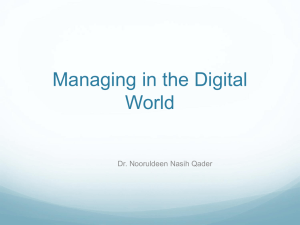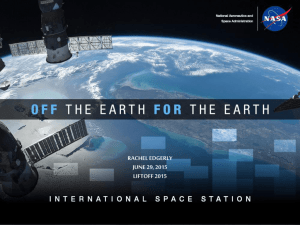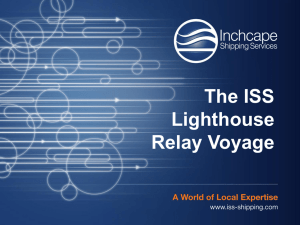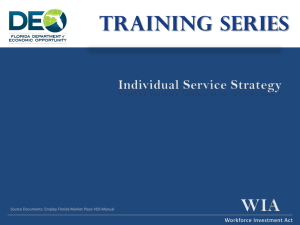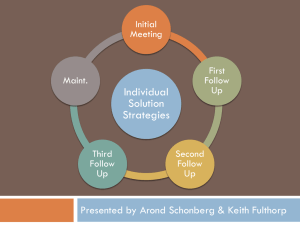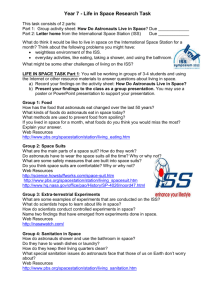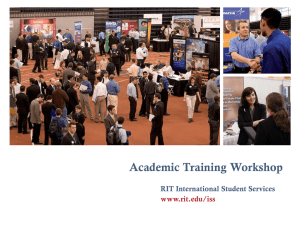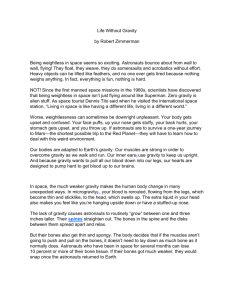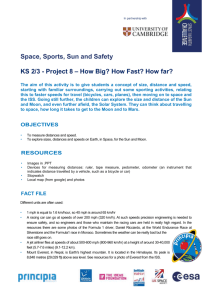Human Adaptation to the Space Environment
advertisement
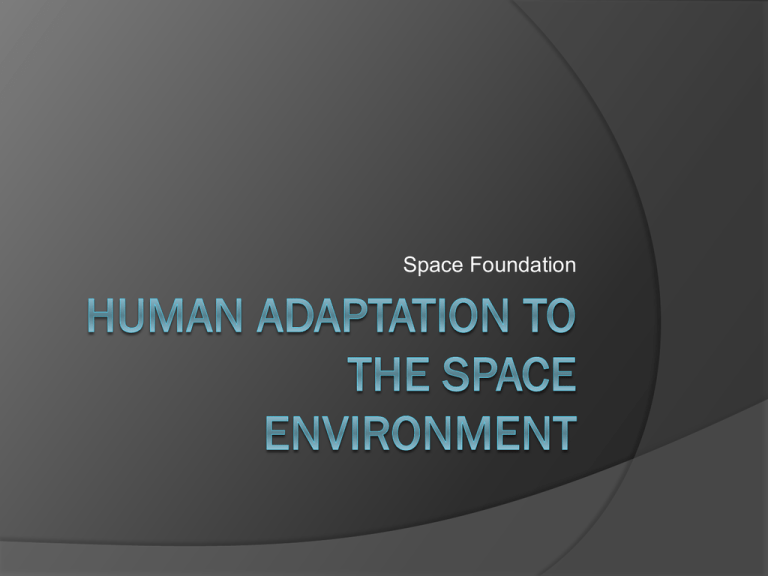
Space Foundation Environmental Challenges Not long ago, some people doubted whether any living thing, much less a human, could even survive a journey into space. Past human space flight missions have demonstrated that humans can survive space flights of several months, even up to a year in duration. How long can humans live in space, and how effectively can the work in space? Write it down What are three main differences between the Earth’s environment and the environment of space that would affect the human body? Major Differences Space has no atmosphere. Space does not have an atmospheric filter to help shield humans from radiation exposure. Humans experience less gravity in space than they do on Earth. (Free fall on the ISS and shuttle) Human Body The body is an integrated system. Systems are in constant communication with each other and interdependent on each other. On Earth our body establishes an “Earth Normal” condition. In space our body adjusts to establish a “Space Normal” condition. ISS and Space Shuttle The shuttle and ISS are designed to keep the astronauts as comfortable as possible—the ISS modules are roomy, bright, and kept at a constant 70 degrees Fahrenheit. Despite the amenities provided, life in space requires considerable acclimation. Space Adaptation Syndrome Experienced by ¾ of all astronauts in “weightlessness.” More commonly known as “space sickness.” Form of motion sickness The Vestibular System Located in the inner ear, “the balance organ.” Helps your brain process information on how you move to help you determine the orientation of your body Quick Adaptation Because the sensation of “weightlessness” is constant, the body and the brain adapt quickly to their new functions and begin to work together relatively quickly. Symptoms of space sickness seem to subside after the first few days of the mission. Not all systems adapt so quickly! Food Space sickness usually involves a dramatic loss of appetite, but eventually the astronaut begins eating again. When that happens, there are many challenges for the first-time visitor to the ISS. Meals on space stations present a myriad of problems because of weightlessness, a shortage of storage space, spoilage, and a shortage of water for food preparation. Café ISS Ed Lu, the American commander on the ISS, enjoyed working on the space station as well as eating on it. While in space on the ISS, he wrote an article about food titled "Eating at Café ISS" for NASA's Web site. In the article, he describes some of the more interesting and amusing experiences of dining in a weightless environment. Space Food Most foods are dehydrated to conserve space and are packed into compartments for storage. Water, one of the most precious commodities, is problematic since it cannot be compressed; it is also one of the heaviest commodities. Water recapture and recycling equipment. Space Food Initially prepared, cooked, and packaged on Earth. Processed to make it stick to a spoon. Avoid crumbly foods. Thick foods like sauces, pastes, peanut butter, and moist cake batter are used to bind flaky foods together. Tortillas are preferred to slices of bread because they create few crumbs. Space Food Easy prep To avoid spoilage Freeze-dried Low-moisture Thermo stabilized Nutrition Eat 3 times a day Expend less energy, need fewer calories Nutritionists work with individual astronauts to create a healthy menu. Living in Space The changes that occur to the human body while on the ISS are appropriate for the environment of space, but may be inappropriate for Earth. The human body reacts as if the change will be permanent, even though it will returning to Earth shortly. Effects on the Body Bone Loss Decrease in muscle tissue Decrease in heart size Puffy-Head Bird Leg Syndrome Bones Bone is living tissue. Bone is formed by cells called osteoblasts. Osteoclasts, large multinucleate cells, break down old bone and are responsibly for releasing calcium into the blood stream. On Earth the process is in equilibrium. Function of Bones on Earth Mechanical support Storage of essential nutrients Production of blood Protection Bones in Space The amount of weight bones must support is decreased to almost zero. Bones that aid in movement are no longer subjected to the same stress. Calcium in bones is broken down and released into the blood stream. Decrease in bone density (osteoporosis). Bones in Space Bone loss begins in the first few days. Most severe loss occurs between the second and fifth months in space. Extended stays on Mir have resulted in losses of bone mass of as much as 20% Astronaut regains some bone mass after returning to Earth, but not all of it. Muscle loss Astronauts need to use their muscles very little in space. Muscle loss and atrophy Fluid Shift Body no longer experiences the downward pull of gravity to distribute blood and other body fluids. Headward shift. Fluid Shift Body senses an over abundance of fluid in the chest. Body tells kidneys to get rid of excess water. Astronauts do not feel thirsty Increase in fluid elimination Because body has less fluid the heart does not have to work as hard. Sleep Bathroom Hygiene Exercise Training NBL

